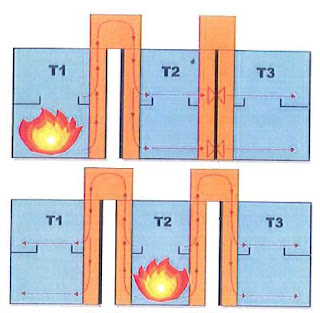Safe Return to Port
Jaime Oliver's lecture in RINA
At the end of last February an international conference entitled "Design and operation of passenger ships" was held in London, at the RINA's headquarters (Royal Institution of Naval Architects), whose 52 lecturers from 10 countries developed, in 14 papers, a series of new ideas and thoughts on the development of ships technology.
Among the presented papers I should like to comment herein that submitted by my friend Jaime Oliver, Dr. Naval Architect, entitled "Adaptation of the architectural project to the new regulations S.R.t.P.(Safe Return to Port), due to both, the author's personality and the subject's interest. Possibly the magazine Ingeniería Naval (Naval Engineering) be soon publishing this paper in full text, but for now I have to limit myself to emphasize some basic aspects developed therein.
Safety of ships is regulated by the "International Convention for the Safety of Life at Sea", "SOLAS", published by the International Maritime Organization, IMO, that in relation to passenger ships, recently introduced the concept of "safe return to port", which is known by its acronym S.R.t.P. The philosophy that gave rise to this concept is that a ship is the safest place for her occupants, even after an accident, unless the seriousness of same is so big as to threaten with her imminent loss. This idea is summarized in the phrase "a ship is her best lifeboat. "
Based on this idea IMO has agreed some requirements, incorporated into the SOLAS Convention, that shall be met by passenger ships built after July 1, 2010, within a certain ship size range and general layout. Key elements in these new requirements are the definitions of:
1) Maximum severity of the accident, below which the vessel must be able to safely return to port with a sufficient comfort level for her occupants. This "casualty threshold" is defined for flooding and fire type of accident.
2) The concept of "safe area" for passengers and crew
3) Essential Services
4) The concept of "safe return to port"
5) Evacuation and abandonment after an accident
Jaime Oliver is a specialist in ships architectural design and in this work presented at RINA he has investigated issues relating to items 2) and 3) above, which govern those characteristics as required to safe areas, which are defined as those being capable of providing a safe accommodation for everyone on board, to protect them from risks to their life and health, to provide basic sanitation services, water / food, health care premises, giving protection from the elements with means for preventing heat stroke and hypothermia, as well as light and ventilation.
In this work Jaime has presented a way to integrate the new rules S.R.t.P. with regard to mentioned items, emphasizing his proposal in the design of a 1,500 passengers and vehicles ferry, about which he has got a great experience, since in recent years his company "Oliver Design" has done the architectural design and the accommodations turnkey fabrication of 10 ferries in that size range, all built in Spanish shipyards. Jaime said that the ideas developed for this project are easily transferable to similar vessels with a length between 150 and 215 meters.
This kind of ferries have their accommodation spaces shared in 3 main vertical zones, separated by A-60 type fire divisions, which together with auxiliary spaces fore and aft, form up the whole ship.
The proposal is to divide the central area of the ship in three independent "towers" (T1, T2, T3), interconnected through stairways, fire doors and a walkway above the upmost level. These towers contain a plus of spaces that, in case of accident, allow to incorporate in a comfortable way to other passengers evacuated from the one damaged tower and afford the necessary facilities in readily accessible spaces, seamlessly integrated into the layout, to provide for food, drinks and medical care.
In case the "casualty threshold" be exceeded, this arrangement makes it easier to escape from the ship with the conventional equipment available on board.
This method, innovative and clever, allows to apply the S.R.t.P. rules "for maximus" no "for minimus". This means that this solution is aimed at providing passengers and crew, in case of accident, living levels above mere survival ones as required by regulations. It is intended that passengers, before and after the accident, have a comparable level of comfort and that the accident does not mean a trauma, returning to port in painful conditions of strict survival. It is remarkable that, with this solution, although the accident fully disable one third of the ship's living areas, all passengers will have a bed, armchair or chair, all the way back to port, at an emergency speed of 6 knots, that may involve spending more than one night on board wherein many passengers would have otherwise to survive, "spread on the floor."
In his presentation J. Oliver remarked that this proposed solution, also meets the regulatory requirement to allow the evacuation of all personnel within a period not exceeding 3 hours.
Also of interest are the provisions contemplated in this solution to meet the demands for food, beverage and medical care in emergencies, through an intelligent allocation of premises and communications, whose details are out of the scope of this post.
This design has been developed with the acquiescence of Bureau Veritas and in the course of its presentation, the lecture deserved a praise from Lloyd's Register.
I think that this Jaime Oliver's work is a valuable contribution to shipbuilding design technology in the field of passenger ships and I hope that the marine industry pays to it the attention it deserves.






No comments:
Post a Comment